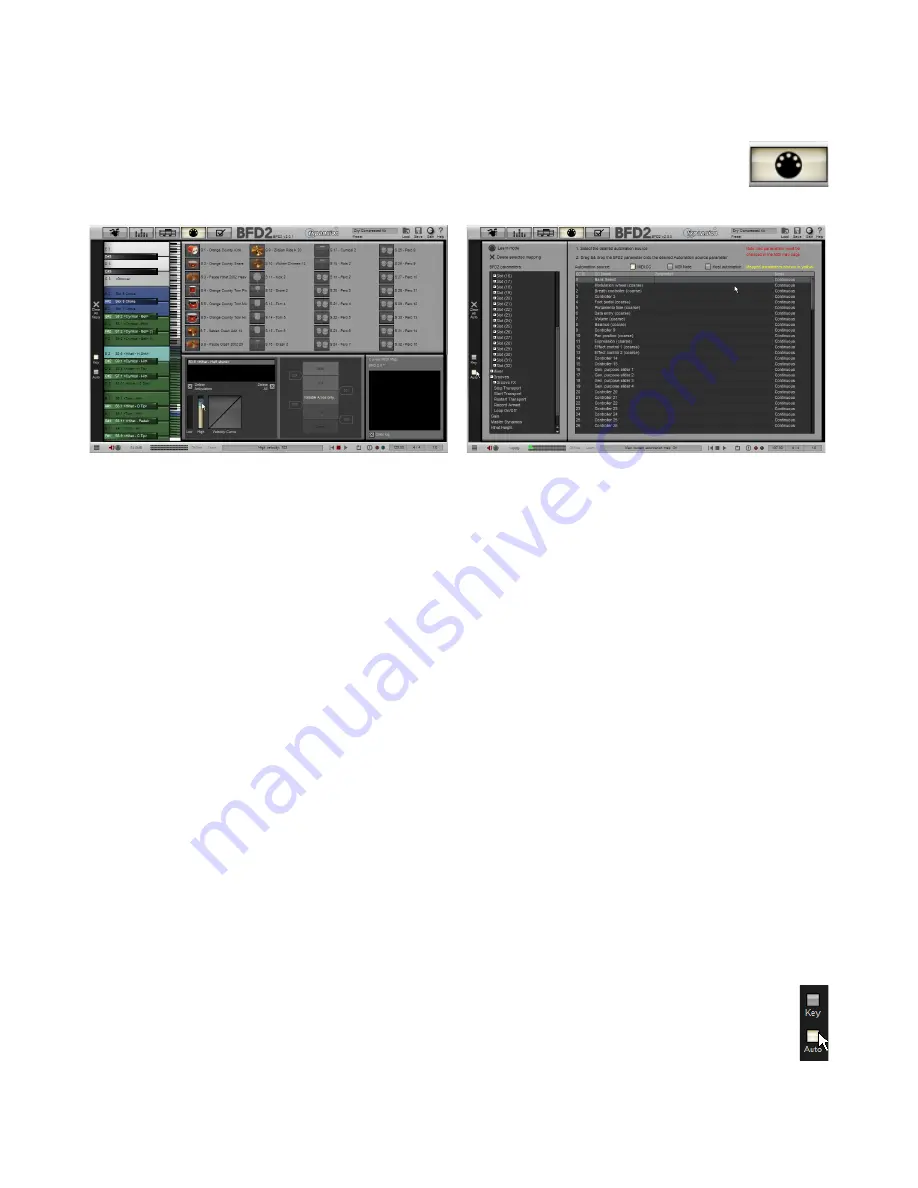
10
chapter 08
MAPPING PAGE
key and automation mapping
8:1 Overview
The Mapping page allows you to map MIDI control devices and host automation parameters to BFD2’s articula-
tions and software controls.
Loading and saving maps (sections 8:2, 8:3)
You may not even need to use the Mapping functions as BFD2 comes supplied with a number of pre-made maps for common pad
controllers and electronic drumkits.
If you create custom key and/or automation maps for your own needs, you can save them for future use in BFD2.
Key mapping view (sections 8:4, 8:5, 8:6)
Mapping articulations to MIDI notes
If you have simple mapping needs – using a MIDI controller keyboard or desktop pad unit for instance – the Kit page’s MIDI note
learn wizard provides an intuitive and easy way of assigning keys or pads to articulations. See section 2:11 for a guide to this
function.
The key map view in the Mapping page is especially useful if:
• you have an electronic drumkit
• you want to layer individual articulations on a single key
• the pre-made maps and simple mapping technique do not suit your working methods and you need to set up more complex
mappings
Automation mapping view (sections 8:7, 8:8, 8:9 and 8:10)
Mapping BFD2 parameters to MIDI CCs and notes (8:7, 8:8, 8:9)
BFD2 parameters can be mapped to MIDI continuous controllers or notes. Notes are especially useful for button-type controls.
Mapping BFD2 parameters to host automation parameters (8:7, 8:10)
You can also map BFD2 parameters to host automation parameters, which are high-resolution automation systems provided by
advanced host sequencing environments.
Switching between views
Use the Key and Auto buttons in the Mapping page toolbar in order to switch to the Key mapping and Automation mapping
views respectively.
Key mapping view
Automation mapping view







































